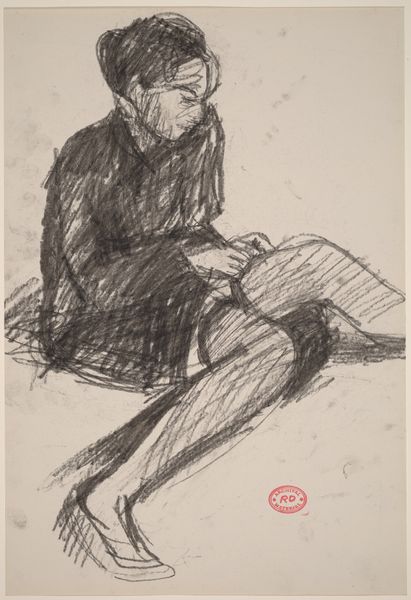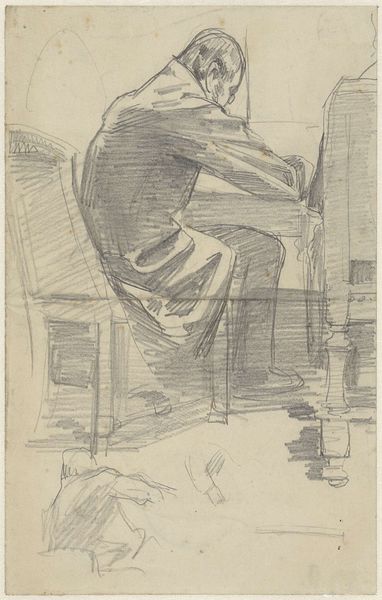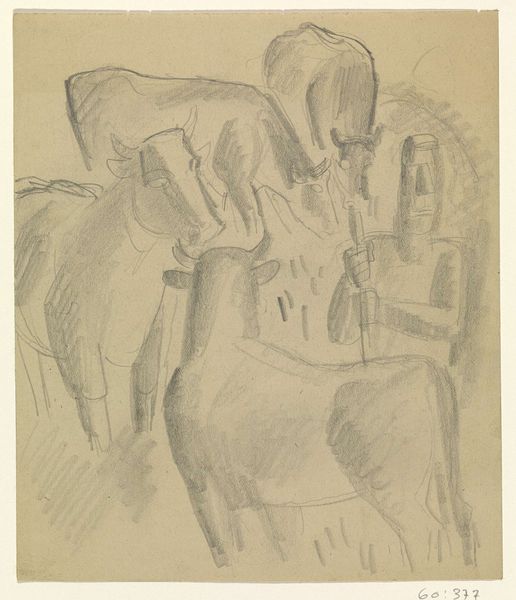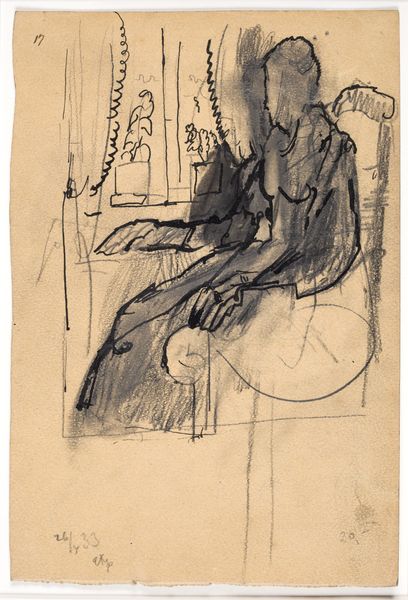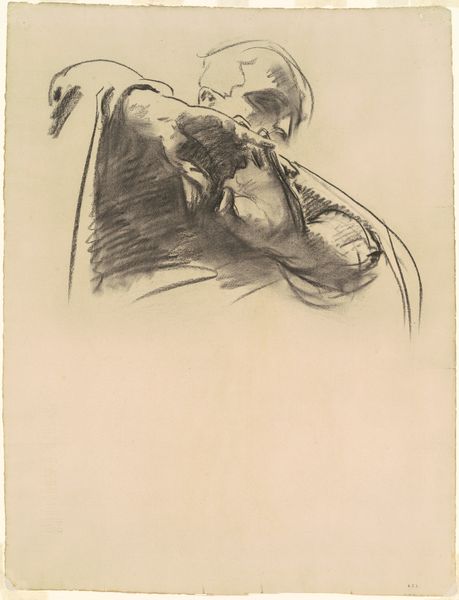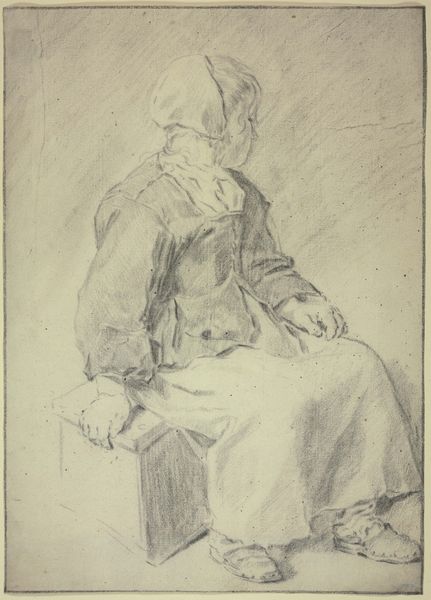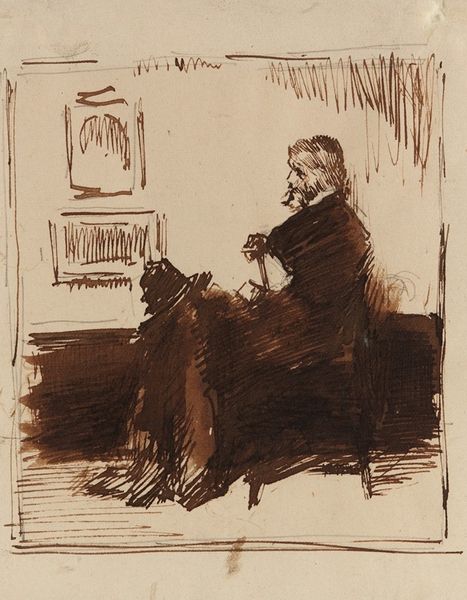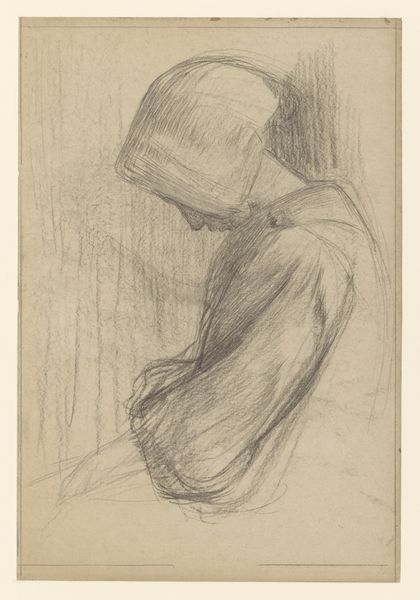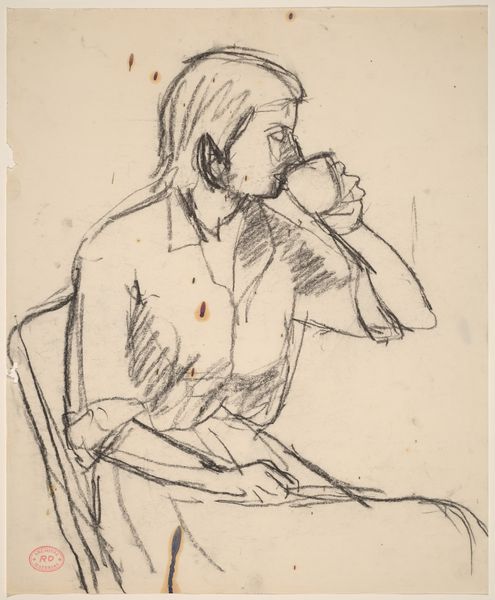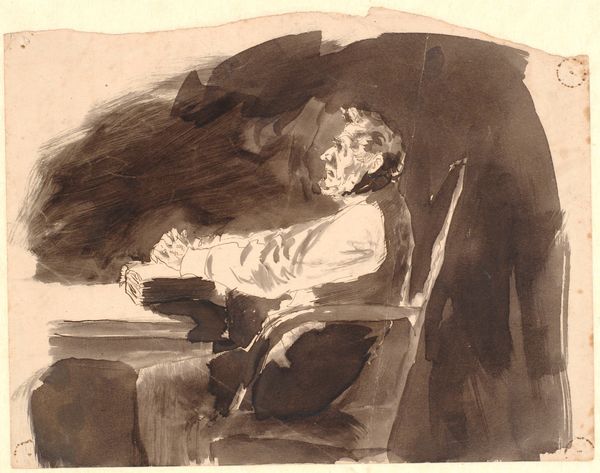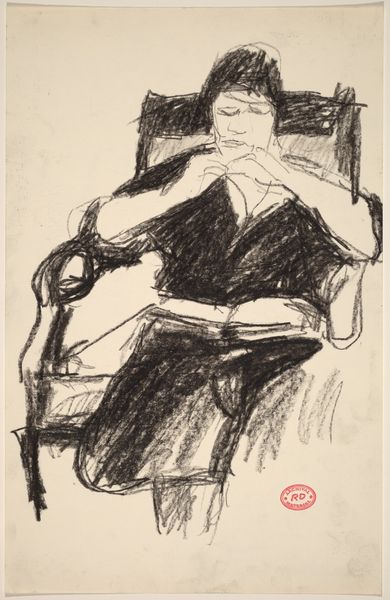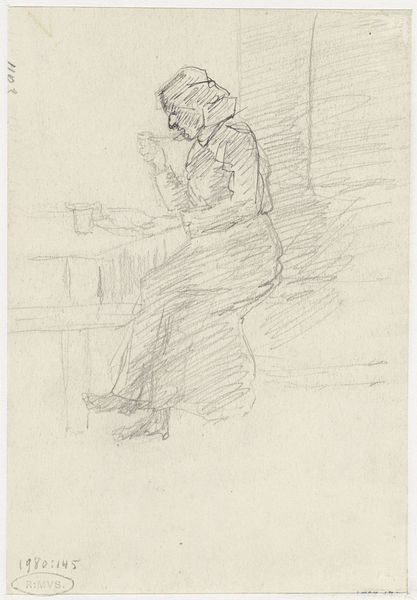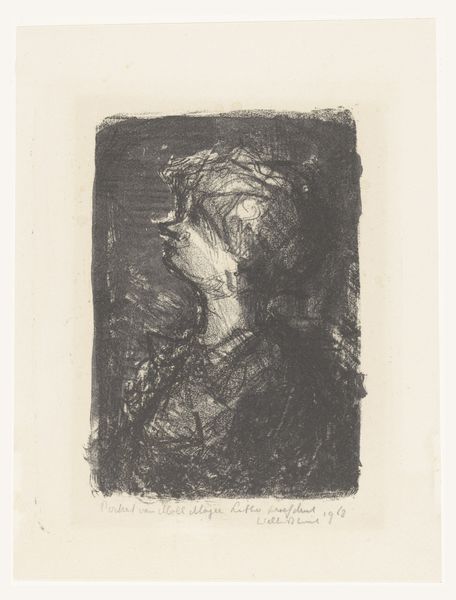
drawing, print, pencil
#
portrait
#
drawing
# print
#
impressionism
#
figuration
#
pencil drawing
#
pencil
Dimensions: 15 3/8 x 11 3/4 in. (39.1 x 29.8 cm)
Copyright: Public Domain
Editor: This is “Violinist, Study for 'The Dance Lesson'” by Edgar Degas, created sometime between 1873 and 1884. It looks like it's made with pencil and possibly another kind of print medium on paper. The violinist’s gaze is so intent. What can you tell me about this work? Curator: I see an immediate emphasis on the working-class aspects of performance. It's not just about the finished spectacle, but about the labor and preparation involved. Notice how Degas renders the violinist. The sketch-like quality points to the artistic process, deconstructing the myth of effortless artistry and highlighting the means of its production. How might we interpret this emphasis in light of the burgeoning industrial revolution occurring at the time? Editor: That's a good question. So, is the roughness also intentional, suggesting the human element against industrial perfection? Curator: Precisely! Degas is foregrounding materiality itself. We can consider what is absent here. There's a whole symphony, a complete stage, missing, drawing attention to what it is and its materials: paper, pencil, the rough textures of their interaction, revealing labor instead of concealing it. The materiality offers a direct connection to Degas’s contemporary world, and hints at some of the economic realities. Editor: It is a refreshing take; the focus on preparation rather than the polished result makes you appreciate the skill. Thank you for clarifying Degas’ approach. Curator: Of course. Reflecting on it, this piece is as much about the socioeconomic context of artistic production as it is about the violinist himself. It reframes the viewer’s perspective and calls on them to value materiality, labor and what goes into crafting those perfect scenes on stage.
Comments
No comments
Be the first to comment and join the conversation on the ultimate creative platform.

